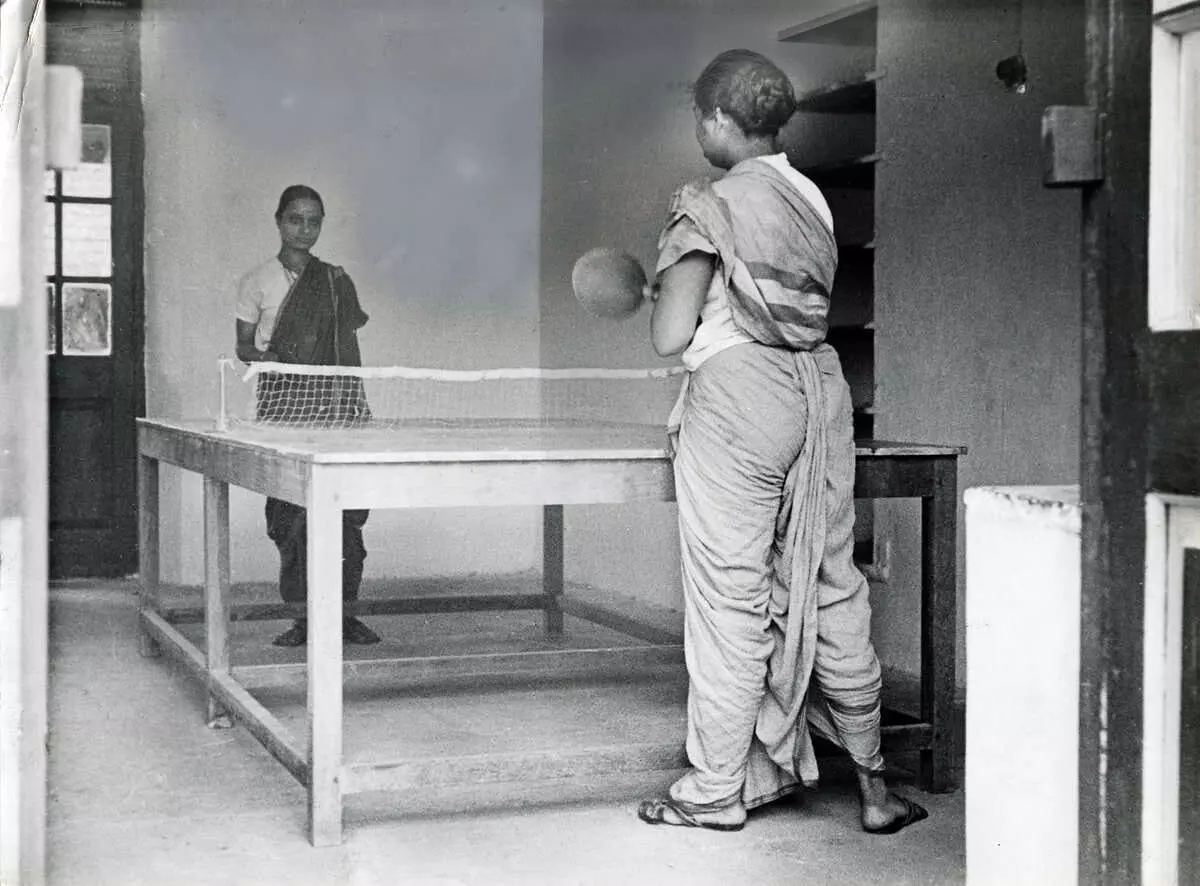Table Tennis
How Ramabai Ranade challenged colonial stereotypes through table tennis
Sport during the colonial era was part of the first wave of resistance against India's rooted and oppressive patriarchal narrative

Women playing table tennis (source- Paperclips/twitter)
Resistance to the British was something that came as a reflex action to many Indian citizens prior to 1947. Without delving into the subject of pre-independence movements too much, sport is something that stood out for India during the early 20th century. The famous Olympians of the Hockey team paved the way for India to forge its own identity as a sporting entity. They were also preceded and followed by several regional football clubs around India that were formed as a means of passive resistance in the independence movement.
One of these organisations that came up was the Seva Sadan Society started by Ramabai Ranade. However, this initiative of hers was no ordinary 'non-cooperation'/civil disobedience movement against the British. It was a reaction to Indian patriarchy that was battling its first wave of women who wished to break free from the shackles of oppression. The Seva Sadan was an outlet that allowed women to have their safe workspace. At a time when India had been introduced to reform movements, Ramabai Ranade went a step further and actually allowed women to perceive and believe.
What really stood out was that women were also introduced to sports while residing at the Seva Sadan. The above depicted pictures show two women playing a game of table tennis. This might come as a shock to most of who consider table tennis as being a relatively modern sport in terms of its popularity and accessibility. But this is exactly why India is a land full of surprises. Access to sport facilities was an issue in the early 20th century for crores of Indian. Access to sports for divorced and ostracised women was taking Indian ingenuity to a whole new level of social development. This is exactly why the Seva Sadan was special for allowing sport to open a whole new channel of activity for oppressed women.
The same organisation also has historic pictures of women performing physical activity exercises or PT as we know it. It is an interesting observation to note that all of them are doing physical activities in sarees.
The aim of the Seva Sadan was to allow women to pick up occupations or hone their skills in contributing to the society while being financially independent. Given that widows were often sent away from home back in the early 20th century (not that they aren't now), the Seva Sadan was initially meant for widows to work towards being nurses. This built up over the years into a target of achieving various professions such as hair dressing, education etc. They might not have produced India's first female Olympian, but the nature of having sport as an activity back then is incredible to know in the 21st century. The pioneers of sports in India need to be looked at in better light. These roles have challenged all sorts of narratives in India against both foreigners and Indian men.
